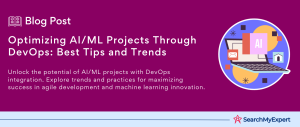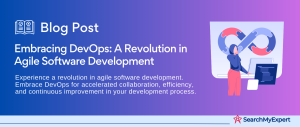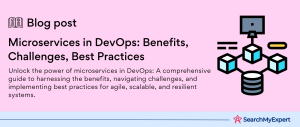Understanding DevOps: What is it?
Defining DevOps: A Synergy of Development and Operations
DevOps, a term derived from the combination of ‘Development’ and ‘Operations,’ represents a paradigm shift in the world of software development. At its core, DevOps is more than just a methodology; it’s a culture, a set of practices that brings together software development (Dev) and IT operations (Ops). The primary goal of DevOps is to shorten the system development life cycle while delivering features, fixes, and updates frequently in close alignment with business objectives.
Core Principles of DevOps: Collaboration, Communication, Automation
- Collaboration:
DevOps hinges on breaking down silos between teams. It fosters a culture where developers and operations teams work closely together, often blurring the lines between their traditionally separate roles. - Communication:
Continuous communication is key in DevOps. It ensures that all team members are on the same page, enabling quick decision-making and seamless workflow. - Automation: One of the most crucial aspects of DevOps is automation. From code integration, testing, to deployment, automation streamlines processes, reduces errors, and speeds up delivery.
DevOps vs. Traditional Development: A Paradigm Shift
In traditional software development models, such as the Waterfall model, development and operations teams work in silos. The development team writes the code and then hands it off to the operations team for deployment, often leading to delays and a ‘throw it over the wall’ mentality.
In contrast, DevOps encourages a continuous loop of feedback and improvements between developers and operations, significantly reducing the time from development to deployment.
The Need for DevOps in Modern Software Development
The digital landscape is rapidly evolving, and businesses must keep pace with these changes to stay competitive. DevOps addresses this need by:
- Accelerating Time to Market: By improving collaboration and automating processes, DevOps significantly shortens release cycles.
- Enhancing Quality: Continuous integration and delivery ensure that changes are tested and deployed efficiently, reducing the risk of bugs and errors.
- Adaptability:
In a fast-paced environment, the flexibility to quickly respond to market changes is crucial. DevOps provides the agility needed to adapt and evolve. - Cost Efficiency: Streamlined processes reduce the manpower and time required, leading to cost savings.
- Customer Satisfaction: Faster deployment of features and fixes means better service and satisfaction for end-users.
Key Benefits of DevOps
DevOps, a transformative approach to software development, brings a multitude of benefits to the table. It’s not just about speeding up the software development process; it’s about enhancing every aspect of software production, from conception to delivery.
Increased Software Delivery Speed and Frequency
- Streamlined Processes:
By automating the software delivery pipeline, DevOps minimizes manual interventions, thus speeding up the entire process. - Continuous Integration and Continuous Deployment (CI/CD): This fundamental practice in DevOps allows for the frequent and reliable release of software, ensuring a constant flow of updates and improvements to the end-users.
Improved Software Quality and Reliability
- Automated Testing:
DevOps integrates testing throughout the development cycle, ensuring each part of the application is rigorously tested before moving to the next stage. - Rapid Feedback Loops:
Continuous monitoring and feedback are integral to DevOps, allowing teams to detect and rectify issues early in the development process.
Enhanced Collaboration and Communication Between Dev and Ops Teams
- Breaking Down Silos:
DevOps encourages a culture where development and operations teams work closely together, leading to better understanding and fewer conflicts. - Shared Responsibility: In a DevOps environment, the entire team is accountable for the success of the product, not just individual departments.
Reduced Risk of Failures and Errors
- Early Error Detection:
Continuous testing and integration mean errors are caught and fixed early, reducing the likelihood of major issues at later stages. - Infrastructure as Code (IaC):
This practice involves managing and provisioning computing infrastructure through code, which is more efficient, repeatable, and less error-prone than traditional methods.
Increased Agility and Responsiveness to Market Changes
- Rapid Adaptation: DevOps enables organizations to respond swiftly to market demands, customer feedback, and competitive pressures.
- Innovation-Friendly:
By reducing the time and effort needed for routine tasks, DevOps frees up resources for innovation and experimentation.
The Transformative Impact of DevOps
DevOps revolutionizes software development and delivery. It’s not just a set of practices; it’s a philosophy that promotes a proactive, collaborative, and agile approach to software development. The impact of implementing DevOps is profound, leading to faster, more efficient, and higher-quality software development cycles, ultimately driving business growth and customer satisfaction.
Core DevOps Practices
DevOps is built upon a foundation of practices that streamline and optimize the software development lifecycle. These core practices are essential for any organization looking to implement DevOps methodologies effectively.
Version Control Systems (Git, SVN)
- Central Repository:
Tools like Git and SVN allow developers to store and manage their code in a central repository. This centralization facilitates collaboration among team members. - Tracking Changes:
Version control systems enable tracking of every individual change by each contributor and help in managing multiple versions of code.
Continuous Integration (CI) and Continuous Delivery (CD) Pipelines
- Automated Testing and Integration:
CI/CD pipelines automate the process of integrating code changes from multiple contributors, testing them, and then delivering them to production. - Frequent, Reliable Releases:
This practice allows for frequent and more reliable software releases, ensuring consistent delivery of new features and fixes.
Infrastructure as Code (IaC) Tools (Terraform, Ansible)
- Automated Infrastructure Provisioning:
IaC tools like Terraform and Ansible automate the provisioning and management of infrastructure, making it faster and more efficient. - Consistency and Scalability: IaC ensures consistent environments are provisioned for every deployment, reducing discrepancies and increasing scalability.
Configuration Management Tools (Puppet, Chef)
- Automated Configuration:
Tools like Puppet and Chef automate the process of configuring and maintaining a consistent state of computer systems and software. - Efficiency and Compliance:
These tools help in managing complex infrastructures efficiently and ensure compliance with defined configuration states.
Monitoring and Logging Tools (Prometheus, ELK Stack)
- Real-Time Monitoring:
Tools such as Prometheus provide real-time monitoring of IT environments, applications, and services. - Insightful Logging:
The ELK Stack (Elasticsearch, Logstash, Kibana) is widely used for logging and helps in analyzing large volumes of log data for better insights.
The Integration of DevOps Practices for Optimal Efficiency
Each of these practices contributes to the overall effectiveness of the DevOps methodology. By implementing these core DevOps practices, organizations can enhance their software development lifecycle, leading to faster delivery, higher quality products, and a more agile response to market needs.
Communication and Collaboration Tools in DevOps
In the realm of DevOps, effective communication and collaboration are paramount. The right set of tools can significantly enhance team coordination, streamline workflows, and boost overall productivity. Let’s explore some of the key tools that facilitate these aspects in a DevOps environment.
Collaboration Platforms (Slack, Microsoft Teams)
- Centralized Communication:
Platforms like Slack and Microsoft Teams offer centralized spaces for team communication, making it easier to share information and collaborate in real time. - Integration Capabilities: These platforms integrate with a wide range of DevOps tools, enabling automated alerts, issue tracking updates, and more, directly within the communication channel.
Issue Tracking and Project Management Tools (Jira, Trello)
- Organized Workflow Management:
Tools such as Jira and Trello help in organizing and prioritizing work, tracking progress, and managing projects effectively. - Enhanced Visibility:
These tools provide visibility into the development pipeline, allowing teams to track issues, manage backlogs, and plan sprints efficiently.
Communication Channels (Email, Video Conferencing)
- Formal and Asynchronous Communication:
Email remains a staple for formal and asynchronous communication, allowing for detailed discussions and record-keeping. - Real-Time Collaboration:
Video conferencing tools facilitate real-time, face-to-face meetings, essential for team meetings, brainstorming sessions, and maintaining personal connections in remote or distributed teams.
The Role of Communication and Collaboration Tools in DevOps
These tools play a crucial role in ensuring that DevOps teams stay connected, informed, and aligned with their goals. They foster a culture of open communication and collaboration, which is vital for the fast-paced, iterative nature of DevOps. By leveraging these tools, teams can improve their efficiency, reduce misunderstandings, and accelerate the software development lifecycle.
In essence, communication and collaboration tools are not just facilitators; they are integral components that drive the success of DevOps methodologies. They enable teams to navigate the complexities of software development and operations seamlessly, ensuring that everyone is on the same page and working towards a common goal.
Cultural Shift: Embracing DevOps Principles
The implementation of DevOps goes beyond the adoption of tools and practices; it necessitates a fundamental cultural shift within an organization. This shift is pivotal in ensuring the success of DevOps methodologies. Let’s delve into the key aspects of this cultural transformation.
Breaking Down Silos Between Dev and Ops Teams
- Encouraging Team Integration: DevOps advocates for a seamless integration of development and operations teams, breaking down traditional silos. This integration fosters a holistic approach to the software development lifecycle.
- Unified Goals:
By working closely together, Dev and Ops teams can focus on a unified set of goals, such as improving deployment frequency and reducing lead time for changes.
Fostering a Culture of Shared Responsibility and Ownership
- Collective Accountability: In a DevOps environment, the entire team shares responsibility for the project’s success. This shared responsibility includes not just developing and deploying code but also ensuring its performance and stability in production.
- Empowering Teams:
Empowerment leads to a sense of ownership, where team members feel responsible for the outcomes of their actions, driving them to produce higher-quality work.
Promoting Cross-Functional Communication and Collaboration
- Encouraging Open Communication: Effective communication across all functions is vital. Regular meetings, stand-ups, and open channels of communication ensure that everyone is aligned and informed.
- Collaborative Problem-Solving: DevOps encourages collaborative problem-solving, where teams work together to find solutions, leading to more innovative and effective outcomes.
Investing in Training and Development for DevOps Skills
- Continuous Learning:
DevOps is an evolving field, and staying updated with the latest tools and practices is essential. Investing in training and development ensures that team members are skilled and knowledgeable. - Skill Expansion: Encouraging team members to learn and develop skills outside their primary area of expertise, such as developers learning about deployment and operations staff learning about coding, can enhance team versatility and understanding.
The Impact of a DevOps Culture
This cultural shift is at the heart of a successful DevOps implementation. It requires a move away from working in isolated units to a more collaborative and integrated approach. This change not only improves the efficiency and quality of software development processes but also enhances job satisfaction among team members.
DevOps in Different Environments
DevOps, adaptable and versatile, can be effectively implemented in various environments, each presenting unique challenges and opportunities. Understanding how DevOps functions in different settings is crucial for organizations looking to optimize their software development and deployment processes.
On-premises Infrastructure vs. Cloud-based Platforms
On-premises Infrastructure:
- Control and Customization:
On-premises setups offer greater control over hardware and software environments. However, this control comes with the responsibility of managing and maintaining the infrastructure. - Scalability Challenges:
Scaling on-premises infrastructure can be more complex and costly compared to cloud-based solutions.
Cloud-based Platforms:
- Scalability and Flexibility:
Cloud platforms like AWS, Azure, and Google Cloud provide scalability and flexibility, allowing organizations to adjust resources based on demand. - Cost-Effectiveness: With pay-as-you-go models, cloud platforms can be more cost-effective, especially for startups and smaller teams.
Continuous Integration and Delivery for Microservices Architectures
- Independent Deployment:
In microservices architectures, services are loosely coupled, allowing for independent development and deployment, which aligns well with DevOps practices. - Enhanced Scalability:
Continuous integration and delivery (CI/CD) pipelines in microservices architectures enable teams to scale individual services without impacting the entire application.
Security Considerations in DevOps Environments
- DevSecOps: Integrating security into the DevOps process, often referred to as DevSecOps, is crucial. This integration ensures that security is not an afterthought but a fundamental part of the entire lifecycle.
- Automated Security Testing:
Incorporating automated security testing tools into the CI/CD pipeline helps in identifying and fixing security vulnerabilities early in the development process. - Compliance and Governance:
Ensuring compliance with industry standards and governance policies is essential, especially when dealing with sensitive data and regulated industries.
Adapting DevOps to Various Environments
Adapting DevOps practices to suit different environments is key to realizing its full potential. Whether it’s managing on-premises infrastructure, leveraging cloud platforms, handling microservices architectures, or ensuring robust security measures, DevOps provides a framework that can be tailored to meet the specific needs and challenges of each environment.
The Future of DevOps: Trends and Challenges
As we look towards the future of DevOps, several emerging trends and challenges are shaping its landscape. These advancements promise to further enhance the efficiency and effectiveness of DevOps methodologies.
Artificial Intelligence and Machine Learning in DevOps
- Predictive Analytics:
AI and ML are being integrated into DevOps to analyze patterns in data, predict potential issues, and suggest optimizations, enhancing decision-making processes. - Automation of Complex Tasks: These technologies enable the automation of more complex tasks within the DevOps pipeline, reducing human error and increasing efficiency.
Containerization and Serverless Computing
- Containerization:
Tools like Docker and Kubernetes have revolutionized the way applications are developed, deployed, and managed, offering more efficient, portable, and scalable solutions. - Serverless Computing:
Serverless architectures, where cloud providers manage the server infrastructure, are gaining popularity. This approach allows developers to focus more on writing code and less on managing servers.
The Rise of GitOps and Platform as a Service (PaaS)
- GitOps: An extension of DevOps, GitOps uses Git as a single source of truth for declarative infrastructure and applications. With Git at the center of the delivery pipelines, teams can automate and manage infrastructure and deployments more effectively.
- Platform as a Service (PaaS): PaaS is becoming a preferred platform for many organizations. It simplifies the process of deploying and managing applications, providing an efficient and cost-effective solution for developers.
Challenges of Scaling DevOps Practices and Maintaining Security
- Scaling Issues: As organizations grow, scaling DevOps practices across larger, more complex projects can be challenging.
- Security Concerns:
Maintaining security, especially in rapidly changing and complex environments, remains a significant challenge. Integrating security seamlessly into the DevOps pipeline (DevSecOps) is crucial.
Navigating the Future of DevOps
The future of DevOps is exciting and promising, with AI and ML, containerization, serverless computing, GitOps, and PaaS shaping its evolution. However, these advancements also bring challenges, particularly in scaling and security. Navigating these trends and challenges requires a continuous learning mindset and a willingness to adapt and evolve.
In conclusion, as DevOps continues to evolve, it remains a critical methodology for organizations looking to thrive in an increasingly digital world. Staying abreast of these trends and effectively addressing the challenges will be key to harnessing the full potential of DevOps in the future.
Conclusion
In summary, DevOps represents a significant shift in the approach to software development and operations, emphasizing collaboration, efficiency, and continuous improvement. From its core practices like CI/CD, version control, and infrastructure as code, to the cultural shift necessary for its successful implementation, DevOps is more than just a methodology; it’s a strategic asset in the rapidly evolving digital world.
As we look to the future, trends like AI and machine learning integration, the rise of containerization and serverless computing, and the adoption of GitOps and PaaS are set to further revolutionize the DevOps landscape. However, these advancements are not without their challenges, particularly in terms of scaling and maintaining security.
Organizations embracing DevOps are finding themselves better equipped to navigate the complexities of modern software development, deliver higher quality products faster, and adapt more swiftly to market changes. As we continue to witness the evolution of DevOps, it’s clear that its principles and practices will remain at the forefront of technological innovation, driving businesses towards greater success in the digital age.
Redefine your IT processes with DevOps Service Firms.
Table of Contents
Toggle






